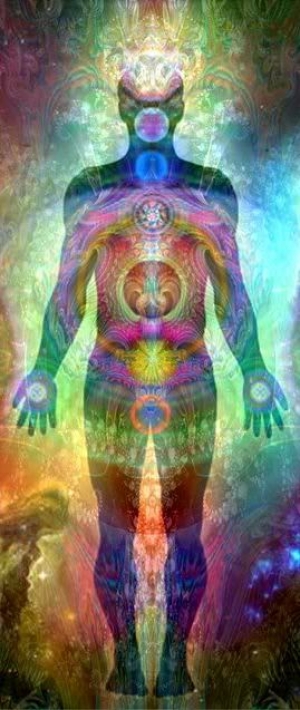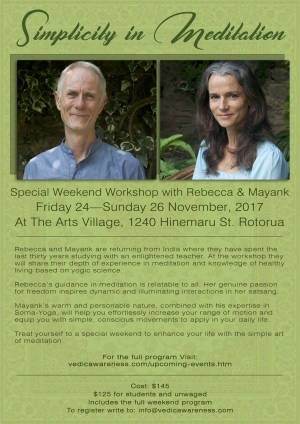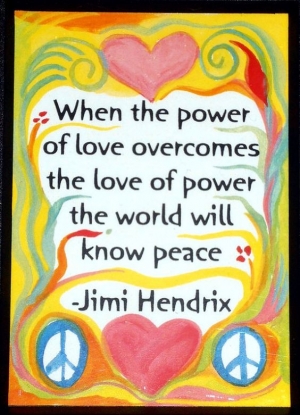
Displaying items by tag: harmony
Global Peace Meditation
Let’s unite with an open heart for a global peace meditation today
at 2.45pm NZST Sunday 5th April 2020
www.globalpeacemeditation.com
Insight & Tools For Surviving, Healing & Thriving After Encounters With Energy Vampires
Tapping and Your Beliefs
One thing I didn’t know about then but am a huge fan of now is Tapping. I would rather use a technique that helps me to heal on all levels before agreeing to prescription drugs or medical or surgical treatments. That’s why I like Tapping and encourage you to try it for just about everything
Tapping, or Emotional Freedom Technique (EFT), is a scientifically proven and very practical way to decrease stress hormones in your body. Studies show that people who use Tapping recover very quickly from whatever ails them, often in just a few sessions.
Whether you use it to reduce physical symptoms or for changing limiting beliefs, Tapping has the effect of releasing the emotional memories associated with your symptoms or beliefs. This happens when you acknowledge your symptom or a traumatic event while accepting yourself completely and tapping your fingertips on a series of acupuncture points on your face and body. Tapping these points sends a calming signal to your brain reducing the stress response. When stress hormone levels are decreased, you have much more access to the part of yourself known as the “Wise Mind,” the part that can guide you to the right answers and allow you to heal.
How Tapping Works
There are 12 major energy meridians in your body that have been used in traditional acupuncture for more than 5,000 years. When the healthy flow of energy becomes blocked in your meridians, it also becomes blocked in your physical body. Tapping uses these acupressure points, but instead of using needles, you use your fingertips to tap the energy points on your body.
When you tap on the energy points linked to a specific organ or system, you input energy directly into that meridian. Tapping, while using a positive statement — such as, “I have everything I need within me to create the financial abundance I desire” — works to clear your meridians and any emotional blocks from your body’s bioenergy system, bringing it back into balance.
Tap Away Beliefs That Keep You Tied To Energy Vampires
No matter what the dilemma is in your life – whether illness, grief, pain, financial distress, excess weight, bad relationships – or if you just want to be more effective in stating and implementing your goals – Tapping really can help.
The reason Tapping works is because you are shifting and then releasing energy patterns that no longer serve you. So, if you have what I call an Energy Vampire (or narcissist) in your life, Tapping can work to help you rid yourself of the beliefs that keep you stuck in your relationship and that can haunt you even after you have released an Energy Vampire from your life.
The beliefs and feelings that keep you in relationships with Energy Vampires include:
- Feeling responsible for other people’s feelings. Most of us know that our feelings are our responsibility; others’ feelings are their responsibility. However, empaths often find themselves taking on the feelings of others.
- Thinking it’s your job to fix someone. You feel you must rescue the other person and help them fit into an image of the way you believe things “should be.”
- Having intense feelings of shame. Typically, people who have narcissistic parents feel shame on a deep level and believe that they must serve their parents or suffer the consequences, including emotional and physical abuse.
- Needing to be perfect. Having a narcissistic or mentally ill sibling or parent can leave you feeling like everything is your fault. It’s common to beat yourself by working too hard, restricting food, or trying to be perfect in other ways and always feeling like you fall short.
- Blaming yourself for your good fortune. Empaths who are involved with narcissists often think that blaming themselves and feeling guilty protects them somehow from the narcissist’s moods and bad behavior.
- Feeling you are not good enough. Many empaths involved with narcissists feel that they are “not good enough” and that they have to earn love.
If you have any of these feelings or emotional patterns, you are a target for Energy Vampires. The good news is that Tapping on whatever you’re feeling helps to release those feelings and free yourself from the emotional patterns that keep you stuck in relationships with Energy Vampires. For example, you can use the phrase “Even though I feel that I am not good enough, I love and respect myself.” Or, “Even though I punish myself by trying to be perfect, I love and respect myself.”
For more powerful & illuminating insights from Dr Christiane Northrup, check out her interview with Jessica Ortner on "Dodging energy vampires: An empath's guide to evading relationships that drain you & restoring your health & power". This interview is through facebook, tap on the link below to listen to the interview or google if this doesn't work for you :)
5 Warning Signs Your Chakras Are Out Of Balance
By Lena Schmidt
Have you been feeling “off” lately? Are you making silly mistakes at work? Are you sick for the third week in a row? Although any number of things could be the explanation for these distressing circumstances, they could also be indicative of an imbalance in your chakra system. What are chakras? And what are the signs your chakras are out of balance? Chakras are energy centers throughout the body. Although there are hundreds of chakras, there are seven main chakras that are generally focused on. These wheels of brilliant energy line up along the central channel of the body, the shushumna nadi.
The chakras along the shushumna nadi are the power centers where the left channel (ida nadi) and the right channel (pingala nadi) intersect. These energy channels and psycho-power centers make up what is known as “the subtle body.” The subtle body is in a different realm than the physical body and the mind, but has a powerful impact on the body, mind, and entire system. The human body system thrives when the chakras and the nadis are open and prana, or life force, is allowed to move throughout the system with ease. Any kind of disturbance or disease in the body, mind, or spirit can cause blockage and imbalance. The goal is harmony. So if you’ve been feeling out of sorts, take a closer look at your chakras to investigate what’s going on and begin to find balance.
If you are feeling out of balance, consider what you have been consuming (food, drink, ideas, experiences), your current life circumstances (traveling, moving, big transitions), and the current season (wind, cold, rain, heat, dryness). Each of these elements has a potentially big impact on your sweet, sensitive human system as a whole.
In the philosophies of yoga and Ayurveda, where the chakras play an important role in understanding the human system, “like increases like” and “opposites balance.” This means that if you already have excess heat in your body (in the forms of anger or indigestion) and you add more heat (like a warm day or spicy food), you may feel even more heat and agitation than you already do—like increases like. On the other hand, if you add the opposite to that equation and take a cold shower or eat some fresh fruit, you may feel better and more in balance—opposites balance. Caroline Myss, author of Anatomy of the Spirit, and an expert in energy medicine, explains that your biography becomes your biology with each thought you think and each experience you encounter.
Are Your Chakras Balanced?
In general, there are five warning signs that your chakras may be out of balance. In striving for balance, too much or too little energy in each of the chakras creates imbalance. Remember: the goal is harmony—balancing your chakras does take effort. The general warning signs are:
- Something feels “off.”
- You get sick.
- You get sick. Again.
- You start making silly mistakes.
- Everything seems to be falling apart.
Each of these general imbalances manifests as specific physical, mental, emotional, and spiritual imbalances in each chakra. Let’s take a closer look at how imbalances in each chakra can influence a sense of disharmony in the body system as a whole.
Root Chakra—Muladhara
This chakra, physically located at the feet, legs, and “roots” of your being, is connected with the element of Earth. The root chakra is associated with your sense of safety, security, and feeling at home within your skin. This chakra is also related to your family of origin and your human tribe.
Warning Signs this Chakra Is Out of Balance
If you are experiencing any of the following symptoms, you may have an imbalance in the root chakra:
- Pain and stiffness in your feet and legs
- Excess flexibility in your hamstrings/low sense of physical stability
- Feeling ungrounded, unsafe, and insecure
- Home life feels chaotic and unsettled
- Feeling stuck in life/low sense of flexibility
To Bring into Balance
- Connect with the earth: go for a hike, walk in the sand, or garden.
- Eat vegetables and fruit—food from the earth.
- Practice grounding pranayama like sama vritti and alternate nostril breathing.
- Wear the color red.
- Stretch and strengthen your legs.
Sacral Chakra—Svadhistana
This chakra, physically located at the sacrum, hips, and sexual organs, is connected with the element of Water. The sacral chakra is associated with your emotions, creativity, and senses. This chakra is also related to your one-on-one relationships and your connection to intimacy.
Warning Signs this Chakra Is Out of Balance
If you are experiencing any of the following symptoms, you may have an imbalance in the sacral chakra:
- Pain and stiffness in your low back and hips
- Feeling easily overwhelmed emotionally
- Loss of imagination and no creativity
- Out of touch with emotions and closed off
- Sexual and reproductive issues
To Bring into Balance
- Connect with the element of water: drink water, swim, take a soothing bath.
- Dance.
- Get in touch with your feelings through journaling or therapy.
- Wear the color orange.
- Move and stretch your hips.
Solar Plexus Chakra—Manipura
This chakra, physically located at the abdomen, mid-back, and side body, is connected with the element of Fire. The solar plexus chakra is associated with all of your thoughts and feelings about yourself. This chakra is about your relationship to yourself.
Warning Signs this Chakra Is Out of Balance
If you are experiencing any of the following symptoms, you may have an imbalance in the solar plexus chakra:
- Digestive issues and abdominal pain
- Low self-esteem
- Overinflated ego
- Inability to commit
- Inability to follow through with goals
To Bring into Balance
- Connect with the element of fire: meditate on a candle flame or bonfire.
- Eat foods that are easy to digest.
- Get out in the sunshine.
- Wear the color yellow.
- Strengthen your core and practice detoxifying twists.
Heart Chakra—Anahata
This chakra, physically located at the heart, chest, shoulders, arms, hands, and upper back, is connected with the element of Air. The heart chakra is associated with love of all kinds: kindness to strangers, romantic love, compassion for others, friendship, family love, and self-love.
Warning Signs this Chakra Is Out of Balance
If you are experiencing any of the following symptoms, you may have an imbalance in the heart chakra:
- Pain in your upper back or chest
- Tight shoulders or, alternatively, overly flexible shoulders
- Inability to receive love in any of its forms
- Lack of self-compassion
- Feeling a sense of lack or loss with regards to love
To Bring into Balance
- Connect with the element of air: get outside in fresh air and breathe deeply.
- Practice loving-kindness/Metta meditation for yourself and others.
- Practice self-care, self-love, and express love to others.
- Wear the colors green or pink.
- Stretch your chest, upper back, shoulders, arms, and hands.
Throat Chakra—Visshudha
This chakra, physically located at the throat, neck, mouth, jaw, and ears, is connected with the element of Ether/Space. The throat chakra is associated with communication, expression, using your voice, and knowing when to stay quiet. This chakra is related to your ability to speak from your heart and mind with clarity and to listen with compassion.
Warning Signs this Chakra Is Out of Balance
If you are experiencing any of the following symptoms, you may have an imbalance in the throat chakra:
- Sore throat or laryngitis
- Jaw pain or habit of grinding your teeth
- Pain or stiffness in your neck
- A habit of talking all the time/not knowing when to stay quiet
- Inability to speak up, set boundaries, or stand up for yourself
To Bring into Balance
- Sing or chant mantra.
- Drink soothing tea or lemon water.
- Practice silent meditation.
- Wear the color turquoise.
- Listen to beautiful music.
Third Eye Chakra—Ajna
This chakra is physically located center of the forehead in the space between the eyebrows and inside the mind. The third eye chakra is associated with your intuition, imagination, inner wisdom, and insight. This chakra is also related to your ability to see deep within your heart spaces to the truest, wisest parts of yourself. When the third eye chakra is open, you see the bigger picture and have a positive view of the future.
Warning Signs this Chakra Is Out of Balance
If you are experiencing any of the following symptoms, you may have an imbalance in the third eye chakra:
- Headaches
- Brain fog
- Lack of intuitive guidance
- Lack of inspiration
- Overactive, overwhelming imagination
To Bring into Balance
- Listen to and honor the messages your body sends you.
- Keep a dream journal.
- Wear the color blue.
- Practice balancing postures like Tree Pose and Dancer’s Pose.
- Practice yoga with your eyes closed.
Crown Chakra—Sahasrara
This chakra is physically located at the top of the head and skull. The crown chakra is associated with your sense of enlightenment and remembrance that you are a small part of a greater whole. This chakra is also related to your sense of place in the universe.
Warning Signs this Chakra Is Out of Balance
If you are experiencing any of the following symptoms, you may have an imbalance in the crown chakra:
- Headaches
- Inability to concentrate or focus on the task at hand
- Seemingly constant drama in your life
- Inability to see beyond your own small corner of the world
- Inability to take on other’s perspectives or practice empathy
To Bring into Balance
- Practice meditation.
- Get involved with volunteer work.
- Keep a gratitude journal
- Wear the color purple.
- Practice Headstand and other inverted yoga poses.
The chakra system is one way to understand the human body. Even minor disturbances in the “subtle body” can manifest as pain, disease, discomfort or general disharmony in your body, mind, heart, and spirit. As you make your way on your journey toward balance, bliss, and happiness, consider checking in with your chakras regularly. Investigating the chakras can be a good temperature gauge for the entire system. Allow your journey to be intuitive and guided by your inner wisdom. Happy harmonizing!
*Editor’s Note: The information in this article is intended for your educational use only; does not necessarily reflect the opinions of the Chopra Center's Mind-Body Medical Group; and is not a substitute for professional medical advice, diagnosis, or treatment. Always seek the advice of your physician or other qualified health providers with any questions you may have regarding a medical condition and before undertaking any diet, supplement, fitness, or other health program.
Enhance Your Life with the Simple Art of Meditation - Rotorua Workshop
What are you doing regularly to help reduce our plastic use?
Supermarket giant to ban plastic bags
Globally, we use and discard approximately 1 trillion plastic bags each year. In Australia alone, over 7000 plastic bags are dumped into landfill every single minute. The effects of this are great: bags pollute the ocean, choke waterways and are ingested by wildlife.
Given these horrifying statistics, when Australian supermarket giant Woolworths announced in July this year that it would stop giving out single-use plastic bags within 12 months, eco-conscious consumers heaved a collective sigh of relief. Despite its parent companies’ decision, Countdown supermarkets in New Zealand did not follow suit – until now.
By the end of 2018, all Countdown supermarkets will stop giving single-use plastic bags to consumers. “We have been tracking customer sentiment for two years,” says Countdown’s managing director Dave Chambers. “Our most recent research, concluded in August, indicates that 83 per cent of our customers support phasing out single-use plastic carrier bags.”
Instead of offering to sell plastic bags for a small fee, the supermarket will reduce the price of reusable shopping bags to $1. Taking effect from October 9, this initiative is the only way to prevent plastic bags from being used, Chambers maintains. “We’re confident Kiwis will get in behind this change across the country, and we’re committed to making the move from check-out bags as simple for customers as we can,” he says. Other sustainable alternatives, such as selling compostable bags, may also be introduced.
Auckland Mayor Phil Gof has applauded the announcement and encouraged other supermarkets to follow suit. “If other businesses make efforts to reduce plastic bag use and the Government introduces a levy on plastic bags, we can likely cut around 500 to 600 million plastic bags a year out of our waste stream in Auckland alone,” he says.
With fellow New Zealand supermarkets FreshChoice and SuperValue pledging to follow suit, it is estimated that 350 million plastic bags will be eliminated from the country’s waste per year.
MiNDFOOD
Practice Squatting to Stay Forever Young
Before the invention of the chair, squatting was part of everyone's daily life.
Today, few people can squat without pain or injury. The YogAlign squat helps release tension in your hips & legs.
This is a pose that will tone your pelvic floor & abdominal organs & in particular, your bladder. In cultures where squatting is done every day, people stay flexible & aligned well into advanced age.
Prostate & colon cancer, knee & hip replacements, & osteoarthritis are rare in cultures that still squat. This pose also aids the digestive & elimination processes & brings a feeling of lightness to your body.
Unless you are a seasoned squatter with excellent knees, it is best to use a strap for support in this pose, to keep compression off your knees.
Place a strap around a post or tree, holding one end in each hand. Slowly drop into a squatting position, with arms straight & engaged strongly through your lats to your hips & into your trunk. Activate your shoulder blade muscles to keep the blades stabilised & your neck elongated. Position the strap just below shoulder level, & keep your feet slightly turned out. Stay on the balls of your feet as you slide back, pulling on the straps while you squat with a lift in your waist, curve in your lower back & your entire spine & skull in natural alignment.
For further details consult your local YogAlign teacher or check out Michaelle Edwards's book YogAlign - Pain-Free Yoga From Your Inner Core www.yogalign.com
The five main factors that determine your performance
If You're Not Eating This Food, You're Going To Have A Hard Time Getting in Shape
by Dr James DiNicolantonio 20 September 2017 mbg
There are five main factors that determine performance. Everyone knows the first factor, and that’s training. Whether we are hitting the gym to build muscle or running to improve our cardio, the first step is always going to be lacing up your sneakers and getting active.
The other four factors are less obvious. Those four factors determine how well you perform during a workout, marathon, or an athletic competition. They are:
- Staying hydrated
- Keeping heart rate down
- Staying cool
- Maintaining blood circulation
What you may not know is that salt helps with each of those four factors—so much so that I’m proposing we consider it the sixth factor for achieving peak performance. Consuming more salt can even help to prevent overtraining, which may actually be caused by our tissues becoming depleted in salt. Consuming more salt improves those four factors by increasing water retention and vasodilating the arteries. When these two effects are combined, you are more hydrated, circulation and blood flow to muscles improves, sweat production increases (helping to keep you cool), and heart rate goes down.
How does salt help with hydration? you might wonder. Most tap or bottled water contains zero sodium, and this increases the risk of hyponatremia, or low sodium levels in the blood. Hyponatremia is a very common problem, especially among endurance athletes, and it can be fatal. We don’t just sweat out water; we sweat salt. We need to consume salt with our water if we want to reduce the risk of dehydration, cramps, and hyponatremia. Indeed, one study concluded that the primary cause of muscle cramps during exercise in warm weather was sodium deficit.
This makes biological sense. When your body works hard, you sweat. And when you sweat, you sweat out salt. Failing to replace the salt that is lost drains your tissues of salt, with wide-ranging negative effects on your ability to keep going. For example, salt depletion can lead to muscle cramping, dizziness, and fatigue, the exact opposite effects that you want during competition.
But wait—what about blood pressure? All of our health agencies, government bodies, and dietary guidelines tell us to consume no more than 2,300 mg of sodium (or 1 teaspoon of salt) per day. The American Heart Association goes as far as telling Americans to consume less than 1,500 mg of sodium per day. Never mind that the average person loses around 1,200 mg of sodium per hour of exercise, with some individuals losing more than 2,000 mg of sodium per hour. And based on the above sodium losses, even if you are eating a normal sodium diet, if you are an avid exerciser you can still be at risk of salt deficit. It’s not hard to calculate how following the low-salt advice while exercising could lead to more harm than good, so you might want to think twice about holding the salt.
I’m often asked about whether consuming sports drinks gives us all the salt we need while we are exercising. The answer is a resounding no. Most sports drinks contain only around 300 mg of sodium per liter of fluid, four times less than the saltiness of our sweat (or around 1,200 mg of sodium per liter of sweat). The reason sports drinks are missing an extra 900 mg of sodium or so is because no one wants to drink something that tastes like sweat. It’s literally too salty, so the manufacturers of sports drinks simply leave that extra sodium out.
Closing that sodium gap is where you may find your competitive advantage. And dosing yourself with salt prior to and during exercise may be the best way to close that gap. The average person may lose about a half of a teaspoon of salt per hour of exercise in sweat. If the loss of salt through sweat is not replaced this may lead to symptoms such as exercise intolerance, muscle spasms and cramps, fatigue, elevated heart rate, dizziness, hypotension, heat stroke and even circulatory collapse. The average person may also lose about 50 mcg of iodine per hour of exercise in sweat (which is why I recommend Redmond Real Salt, which contains almost this exact amount of iodine per half teaspoonful of salt). Preventing the depletion of salt and iodine that occurs through sweating is a great strategy to help reduce the risk of overtraining syndrome and even potentially hypothyroidism. You can drink the salt, or simply put it on the food you eat before or after working out. While I lay out a more precise salt dosing regimen based on ambient temperature in my book, The Salt Fix, this is a good place to start.
By Dr James DiNicolantonio author of The Salt Fix
Article from mbg mindbodygreen
ps I have just started using Harker Wholefoods Celtic & New Zealand natural sea salt enriched with NZ deep water sea kelp. It has 84 known minerals & trace elements & naturally rich in iodine. No chemicals, additives or preservatives.
International Day of Peace
Contact Leonie Main
m: +64 (0) 274 96 96 33
19B Golf Road, Mount Maunganui 3116, New Zealand
Facebook: Gypset Life












